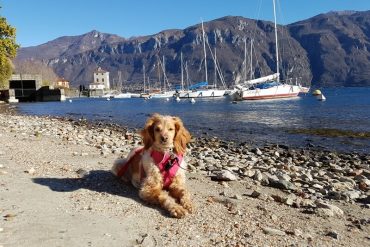Should you get the Ferry or Eurotunnel with dogs traveling to Europe from the UK? Yes, I know that there are options to fly too but, even if Annie were a smaller breed, it wouldn’t be my personal choice to take her on a flight unless I didn’t have another option.
I have done a few trips over to Europe now with a dog, using both the Ferry and Eurotunnel. I thought it could be useful for some of my fellow dog lovers if I provided you with some details of our experience if you are planning a trip with your dog/s.
Below is a summary of the journeys that we have made to give you a handy overview of times, costs etc.
| Transport Provider | Journey | Date of Travel | Journey Length | Accommodation | Cost |
| Brittany Ferries | Portsmouth to Le Havre | January 2017 | 8 Hours, overnight | Pet-Friendly Cabin | £184 |
| Brittany Ferries | Le Havre to Portsmouth | March 2017 | 5.5 hours, daytime | Pet-Friendly Cabin | £139 |
| Eurotunnel | Folkestone to Calais | July 2018 | 35 minutes | Stayed in car | £165 |
| Eurotunnel | Calais to Folkestone | April 2019 | 35 minutes | Stayed in car | £123 |
| DFDS Ferries | Southshields to Amsterdam | May 2019 | 16 hours | Pet-Friendly Cabin | £384 |
Brittany Ferries to France With Dogs
When I travelled with my last dog, Daisy, for a Spanish Road Trip, we opted to travel using Brittany Ferries. They have certain ferries/routes that have allocated pet-friendly cabins.
Other ferry providers also allow dogs, but generally, your dog has to stay in the car or, more often, travel in an allocated kennel. Because Daisy was not used to being kennelled, I didn’t want to subject her to this, so we travelled in comfort!
Our experiences were good ones. We did travel in January and March, so it was low season, it may be different during the summer season. We travelled from Portsmouth to Le Havre in France and back.
There were no long queues, loading the car was smooth, and our little cabin was clean and pretty comfy. It would fit four people as pull-down top bunks are available and there is even a small bathroom with shower facilities. We also got a doggy gift pack with a travel bowl, a treat and some other bits and bobs.
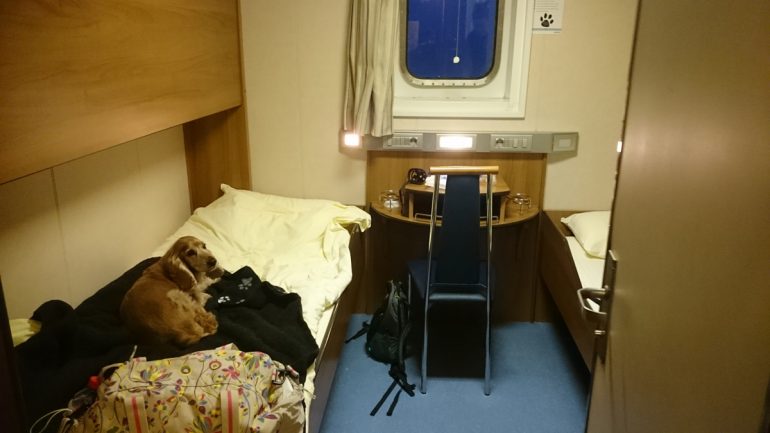
The on-board regulations state that all dogs must be kept on a lead and muzzled at all times when outside the car or cabin. They do ask to see your muzzle. We did practice getting Daisy used to wearing the muzzle ahead of the journey, but things were pretty relaxed onboard, and not many dogs wore their muzzles. Not sure if this is a good or a bad thing and, again, it may be different in high season.
The only thing that was an issue for us was the toileting arrangements for wee Daisy. There is an allocated outside deck area to exercise your dog and allow them to have a toilet break. It is pretty small, but most dogs seemed to manage. Because it is still part of the ferry though, I don’t think Daisy thought she was “allowed” to pee there. She prefers a bit of grass to go on! It meant that no matter how many times we went out, she just wasn’t interested in going. The ferry crossing (including wait times etc.) was nearly 12 hours as it was an overnighter. Good job she had a bladder like an elephant!
The ferry times vary, depending on whether you have an overnight or daytime ferry. Our overnight ferry was 8 hours long and cost £184. The daytime one was five and a half hours long and £139. Bear in mind these prices were low season though. They do go up during the summer.
Eurotunnel With Dogs Traveling to Europe
Being able to be on deck approaching Le Havre was lovely, and sleeping in the boat a novelty but, based on my experiences, the tunnel is my preferred option, mainly because of the quick journey time and costs.
It is just a 35-minute journey through the tunnel from Folkestone to Calais in France, no problems with worrying about pee breaks for Annie, and you don’t have to try to sleep in a noisy, rocking boat.
We travelled in July the first time, so it was peak season, but our experience of things was very smooth. It is a very organised process at the UK side, and you can park up and are then clearly advised when to bring your car forward for boarding the train.
There is even an off-leash, secure exercise area for your dog and Annie was treated to a complimentary sampler of “Pawsecco”.

Our second trip was the return from Calais in France to the UK. There were HUGE delays, and it was a little bit more chaotic than our outbound trip, but this was attributed to the fact that strikes were going on that day, so I think this was unusual.
There are multiple options for booking slots throughout the day for the Eurotunnel. We paid £165 on our first trip and £123 on our journey back from France. We travelled in April, so I think the price was lower because of the time of the year.
DFDS Ferry to Amsterdam With Dogs
Having done the Eurotunnel a couple of times, I was fed up with the long journey back to Scotland from Folkestone. After having the lovely clear toll roads through France, coming back to the invariably traffic heavy roads of the UK was a pain.
For a change, I thought I would try a different Ferry route on our most recent trip back from Scotland to Courmayeur. By travelling on DFDS Ferries from Southshields to IJmuiden, just outside Amsterdam, it meant I only had a 2.5-hour journey from my family in Scotland to the Ferry Port.
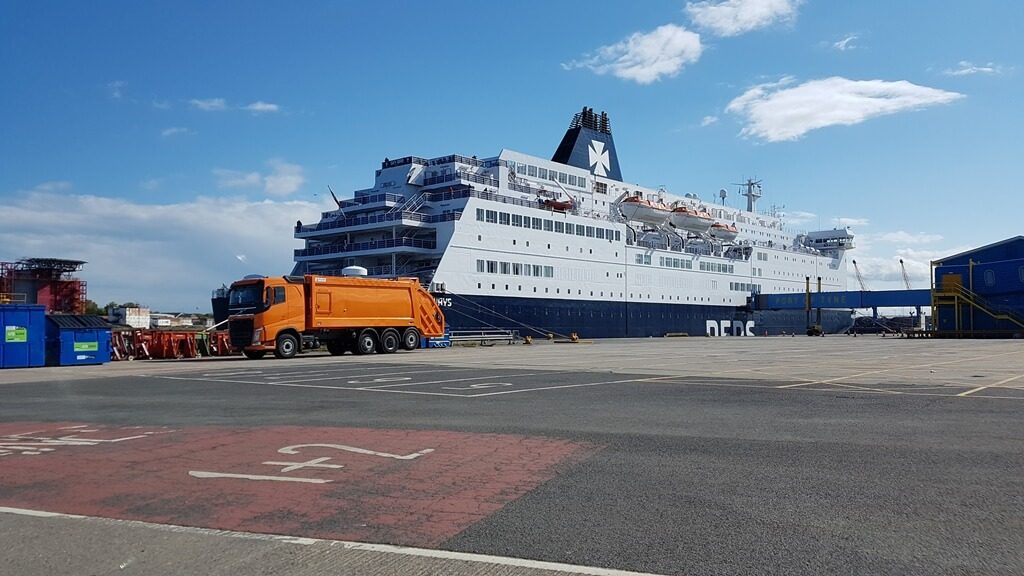
The ferry trip is a lot longer, at 15 hours, but it is an overnight trip, and it meant that I would have at least one less nights accommodation to pay for as the overall driving time is reduced doing this route.
It was considerably more expensive than any of the other travel options at £384 for a
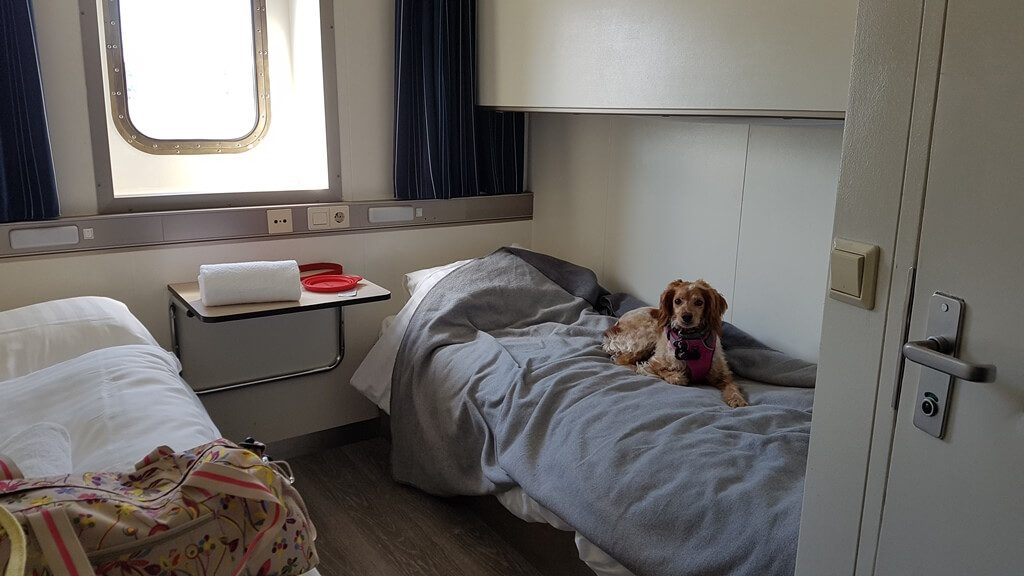
The ferry is much better equipped than the Brittany Ferries that I had been on; they even have a cinema! Of course, everything comes at an extra cost though.
Our room was comfortable and clean. There are only a limited number of pet-friendly cabins and, if you don’t manage to secure one or don’t want to pay extra for it, your dog has to travel in their provided kennels (at a slightly lesser cost).
I had read that there was a dog toileting area on the ship. I wasn’t sure if I would have the same issue with Annie not wanting to potty in a non-grassy area, and then I was even more worried when I discovered the toileting area was a tiny little sandbox. Thankfully she was a star and did use the space. I have since read that there is also an outside toileting area, but I was not shown this so cannot confirm if this is the case.
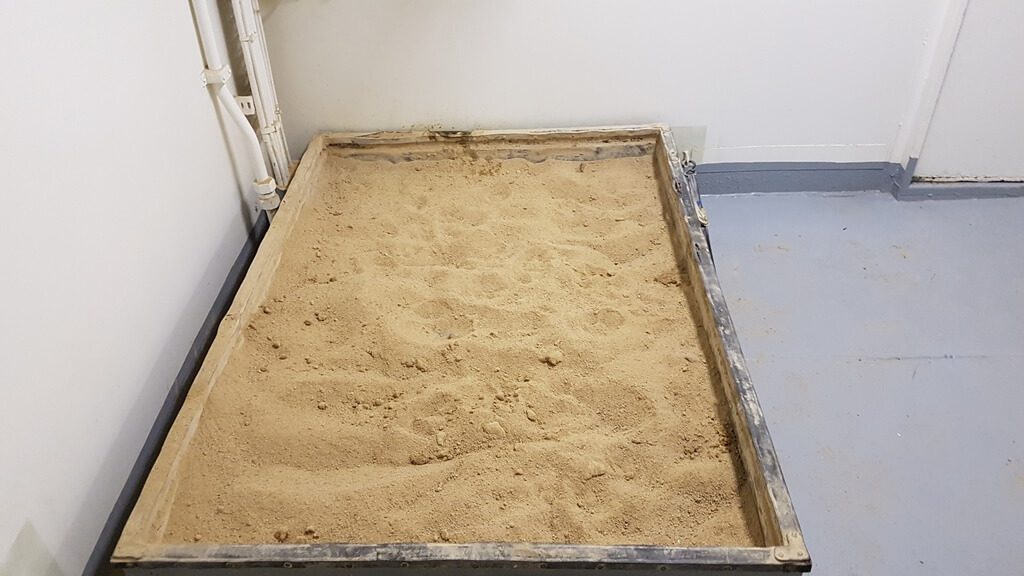
I am not sure if I will do this option again. It was expensive, and although Annie was so good on the trip, I felt like it was a long time for her to have to stay in the cabin. The lesser amount of driving we had to do did make it a bit less stressful in that respect. So I guess if you are based in the North of the UK, it is one that you could consider.
The bonus about this option is that, after disembarking, you can drive five minutes along the road to stop at the beach at IJmuiden. It is especially great if you have a dog that needs to blow off some steam after the long trip. It is beautifully clean, with a dog friendly section (called IJmuiderslag), complete with poo bag stations, and we both had a blast!
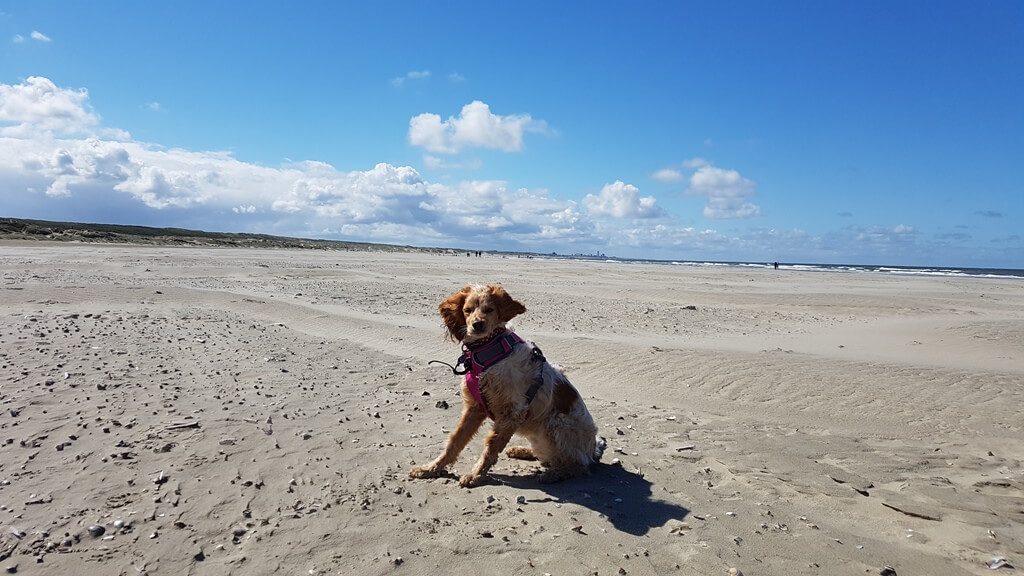
The Importance of an Up to Date Pet Passport
Don’t forget to have a fully up to date Pet Passport for the return leg of your journey. On my Spain trip, my Vet had incorrectly completed one of the vaccination dates (it was spotted at the UK side by Brittany Ferries, but they don’t always check on the UK side). If they hadn’t spotted it, we could have been in trouble trying to come home. Luckily we had time and an accommodating and apologetic Vet who got a replacement sent over to us in advance of our return travel.
On your return to the UK, you also need to make sure that your dog has been given a tapeworm treatment through a vet no less than 24 hours, and no more than five days before travelling.
Of course, these requirements could change given the current uncertainty with Brexit, and you should always double-check well in advance what the up to date situation is. The UK Government website should have the most current details.
I would love to hear about other people’s experience using the Ferry or Eurotunnel with dogs traveling to Europe.




